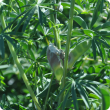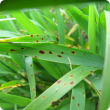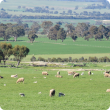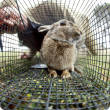Pests, weeds & diseases
Pests, weeds and diseases pose a serious risk for primary producers as they can impact on market access and agricultural production.
To reduce the impact of pests, weeds and diseases, the Department of Primary Industries and Regional Development:
- works with landholders, grower groups, community groups and biosecurity groups.
- provides diagnostic services and information on prevention, management and treatment.
- provides biosecurity and quarantine measures to prevent introduction, and to eradicate or manage current pests.
For advice on pests, weeds and diseases search our website, the Western Australian Organism List or contact our Pest and Disease Information Service (PaDIS).
For diagnostic services, please contact our Diagnostic Laboratory Services.
Filter by search
Filter by topic
- (-) Remove Mechanical, physical and cultural filter Mechanical, physical and cultural
- Control methods (43) Apply Control methods filter
- Chemicals (24) Apply Chemicals filter
- Crops (20) Apply Crops filter
- Grains (18) Apply Grains filter
- Diseases (13) Apply Diseases filter
- Weeds (13) Apply Weeds filter
- Pests (12) Apply Pests filter
- Herbicides (12) Apply Herbicides filter
- Grains research & development (11) Apply Grains research & development filter
- Fungi (10) Apply Fungi filter
- Crop diseases (10) Apply Crop diseases filter
- Wheat (8) Apply Wheat filter
- Pest mammals (7) Apply Pest mammals filter
- Crop weeds (7) Apply Crop weeds filter
- Pest animals (7) Apply Pest animals filter
- Barley (5) Apply Barley filter
- Livestock management (4) Apply Livestock management filter
- Nematodes (4) Apply Nematodes filter
- Livestock & animals (4) Apply Livestock & animals filter
- Fungicides (4) Apply Fungicides filter
- Biosecurity & quarantine (4) Apply Biosecurity & quarantine filter
- Biosecurity (4) Apply Biosecurity filter
- Invasive species (3) Apply Invasive species filter
- Declared plants (3) Apply Declared plants filter
- Pulses (2) Apply Pulses filter
- State Barrier Fence (2) Apply State Barrier Fence filter
- Viruses & virus-like (2) Apply Viruses & virus-like filter
- Oats (2) Apply Oats filter
- Sheep (2) Apply Sheep filter
- Lupins (2) Apply Lupins filter
- Baits & poisons (2) Apply Baits & poisons filter
- Beef cattle (2) Apply Beef cattle filter
- Canola (2) Apply Canola filter
- Livestock species (2) Apply Livestock species filter
- Livestock research & development (1) Apply Livestock research & development filter
- Livestock health & diseases (1) Apply Livestock health & diseases filter
- Management & reproduction (1) Apply Management & reproduction filter
- Pest insects (1) Apply Pest insects filter
- Livestock disease surveillance (1) Apply Livestock disease surveillance filter
- Pastures (1) Apply Pastures filter
- Mites & spiders (1) Apply Mites & spiders filter
- Biological control (1) Apply Biological control filter
- Birds (1) Apply Birds filter
- Bacteria (1) Apply Bacteria filter
- Feeding & nutrition (1) Apply Feeding & nutrition filter
- Grains Research & Development (1) Apply Grains Research & Development filter
- Harvesting (1) Apply Harvesting filter
- Livestock biosecurity (1) Apply Livestock biosecurity filter






